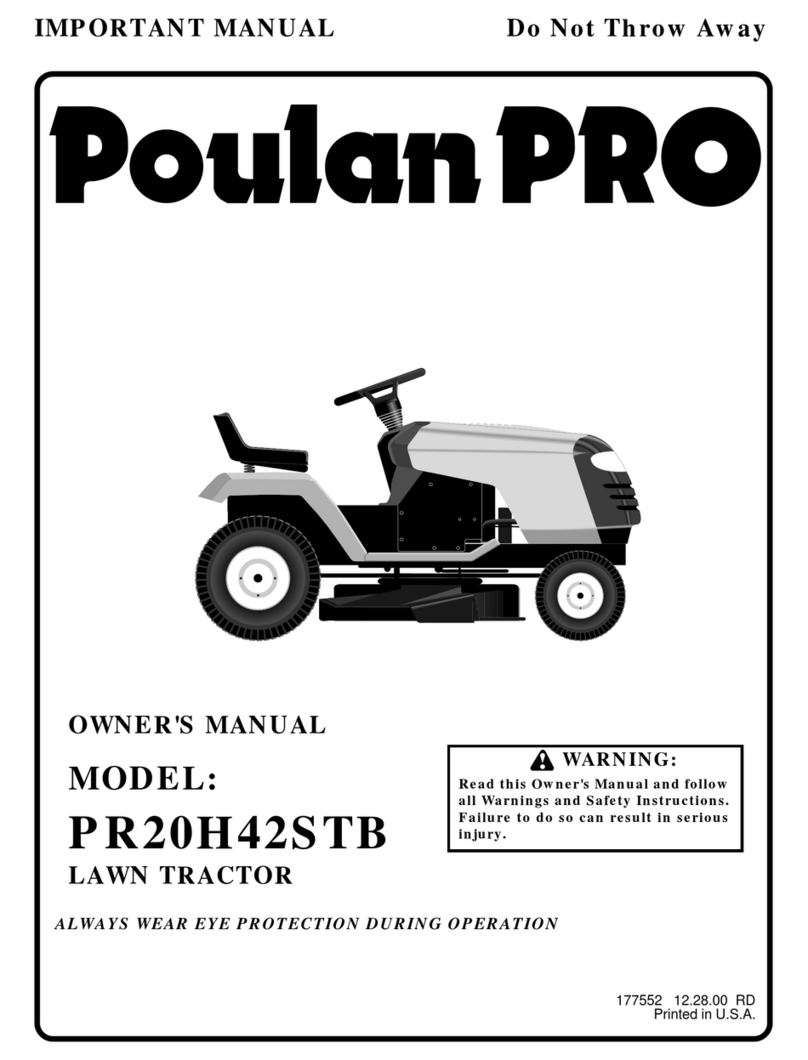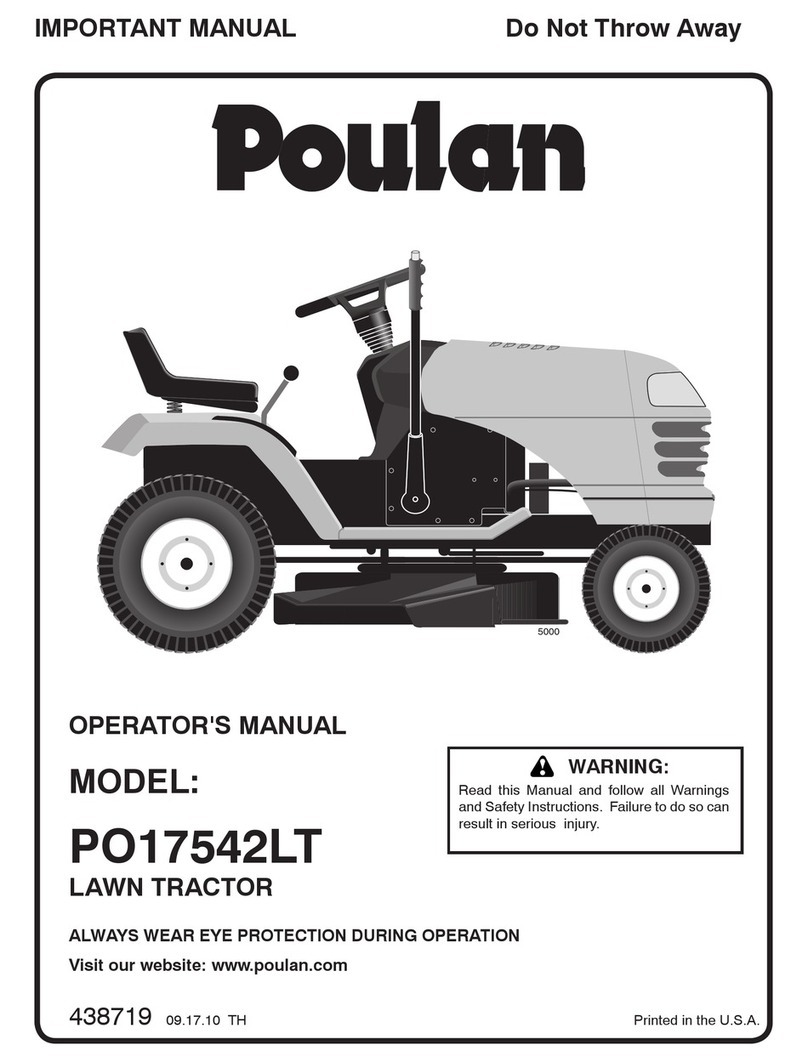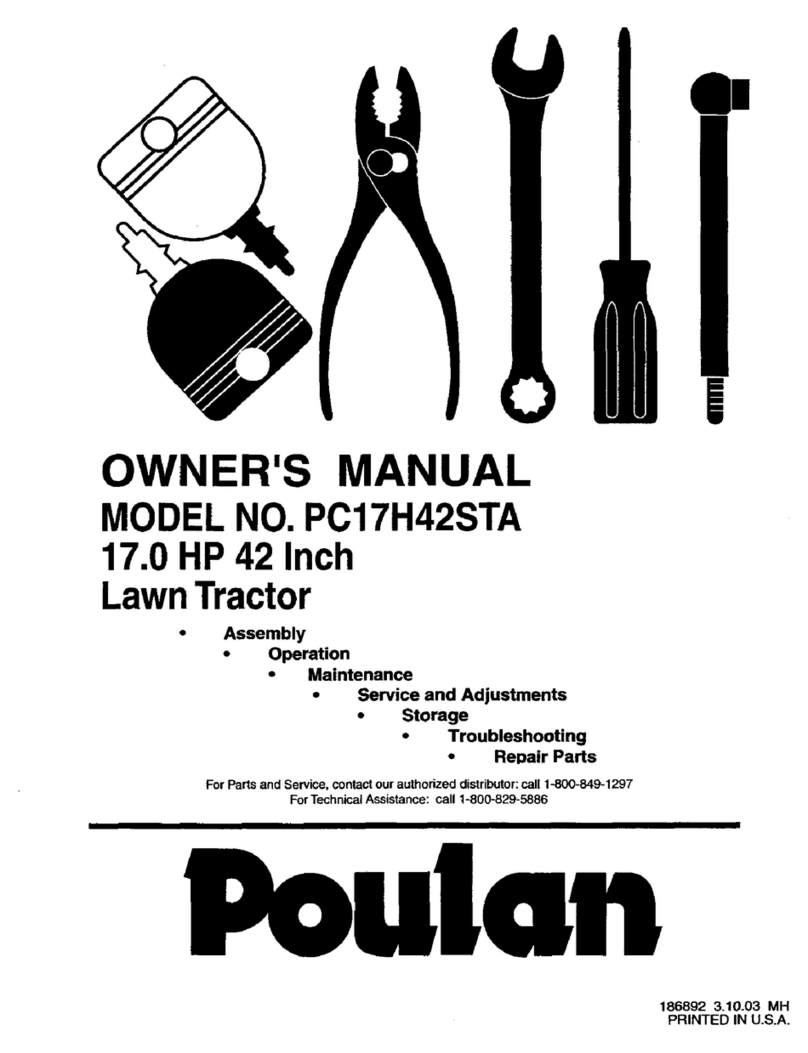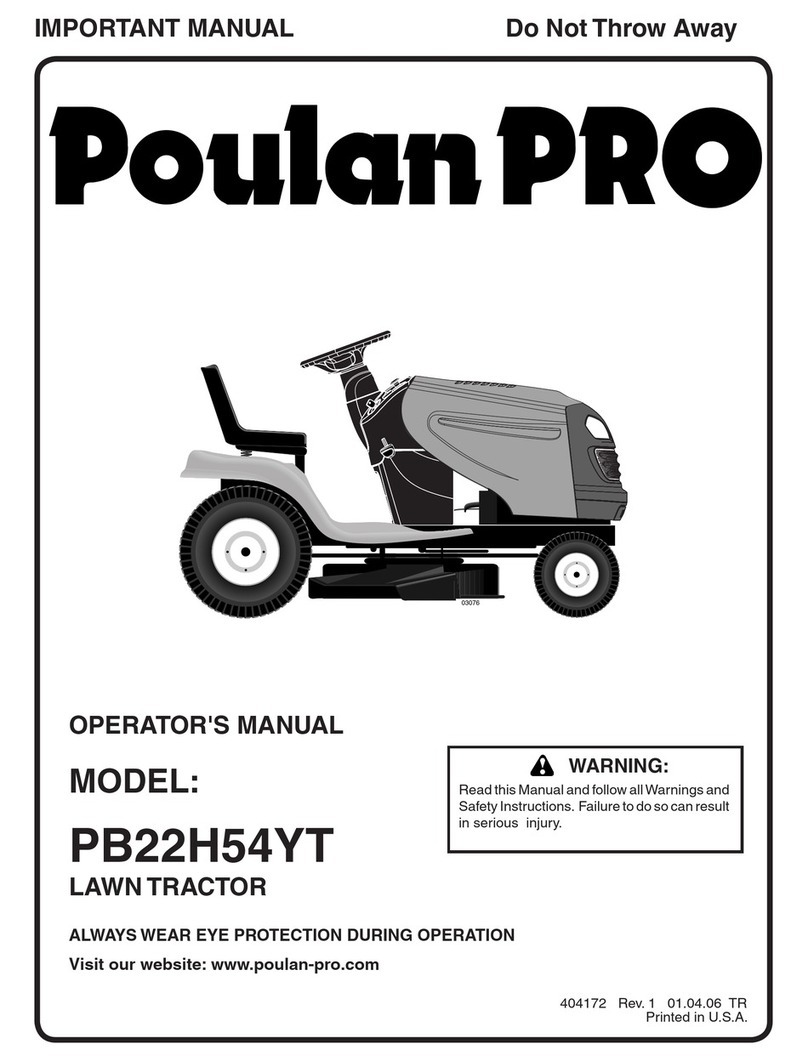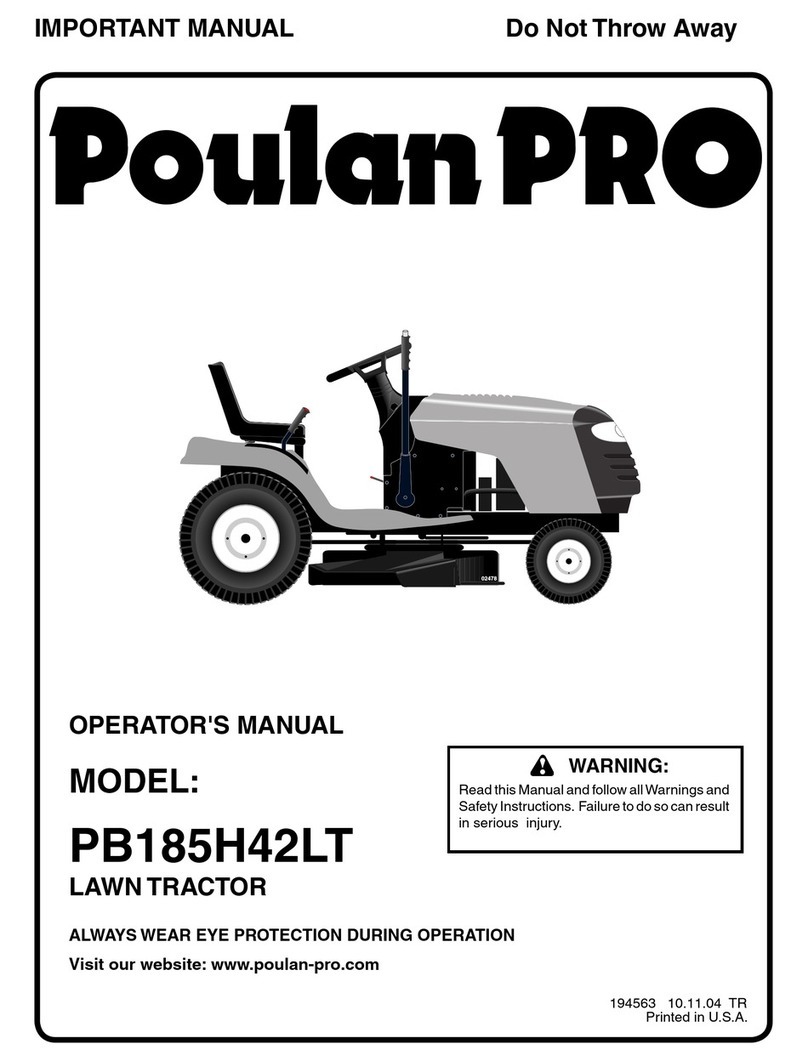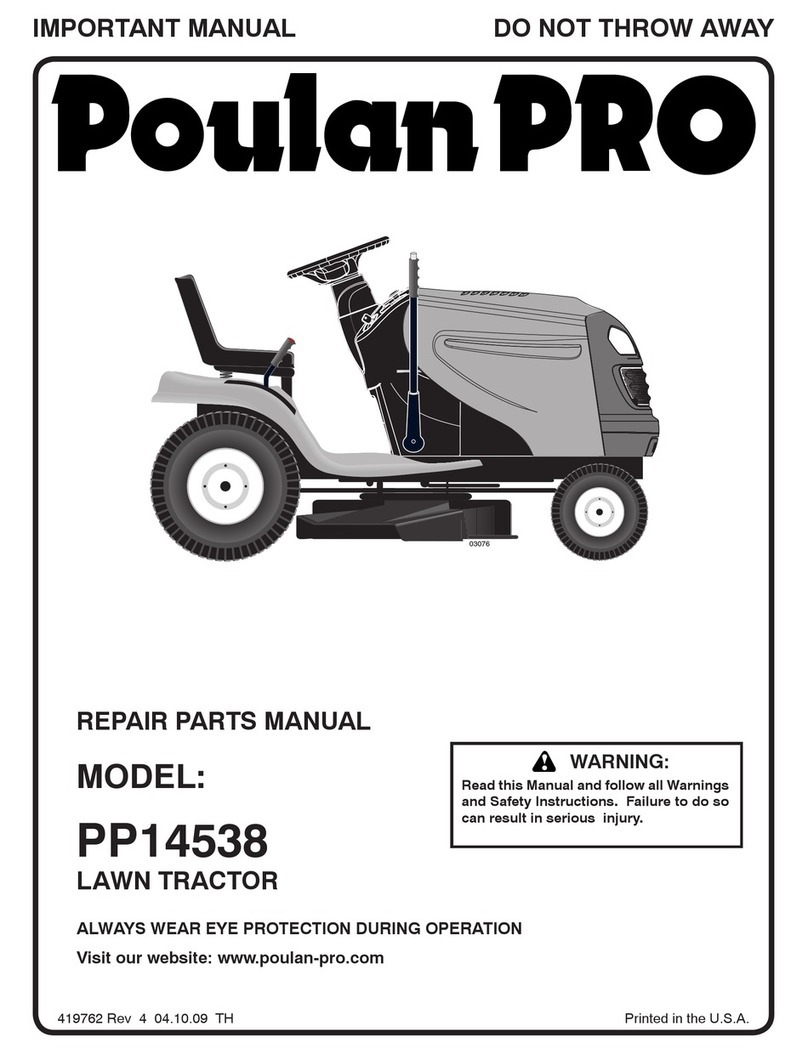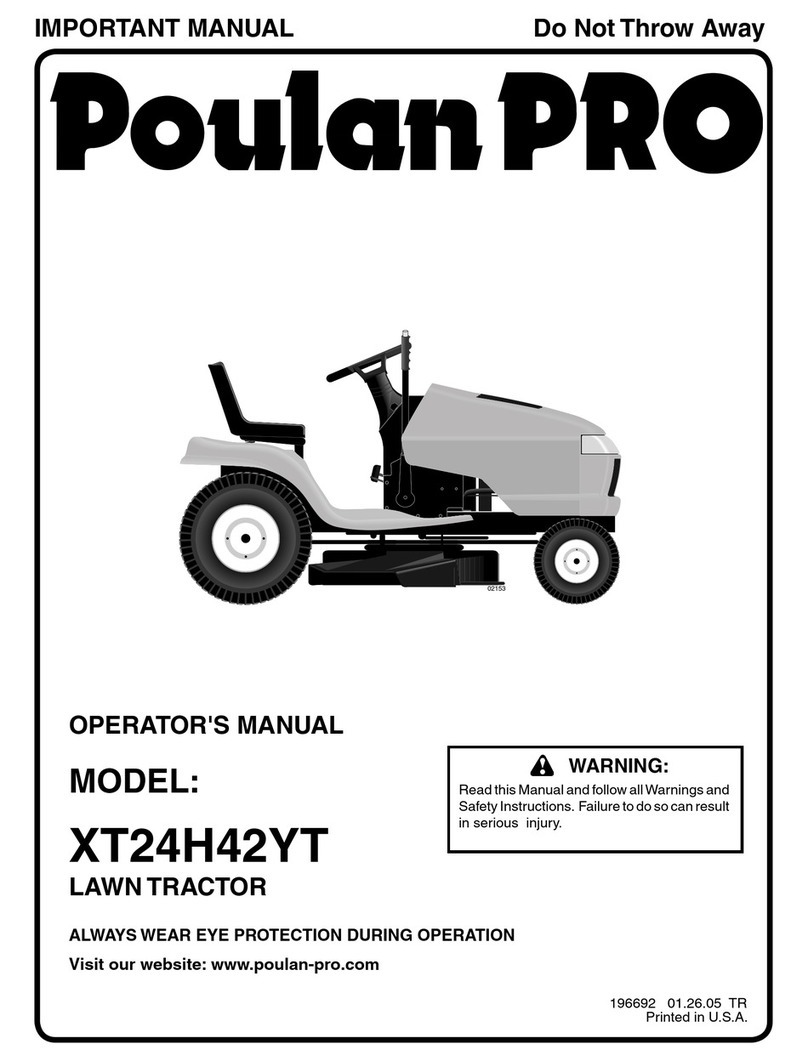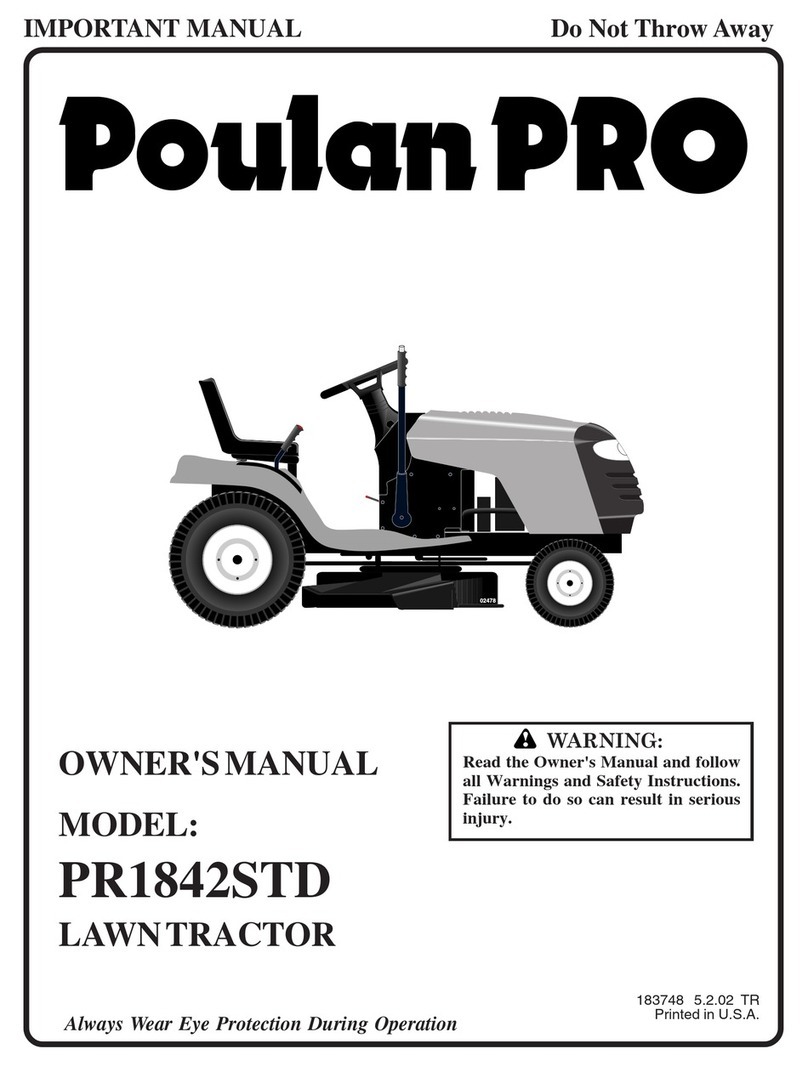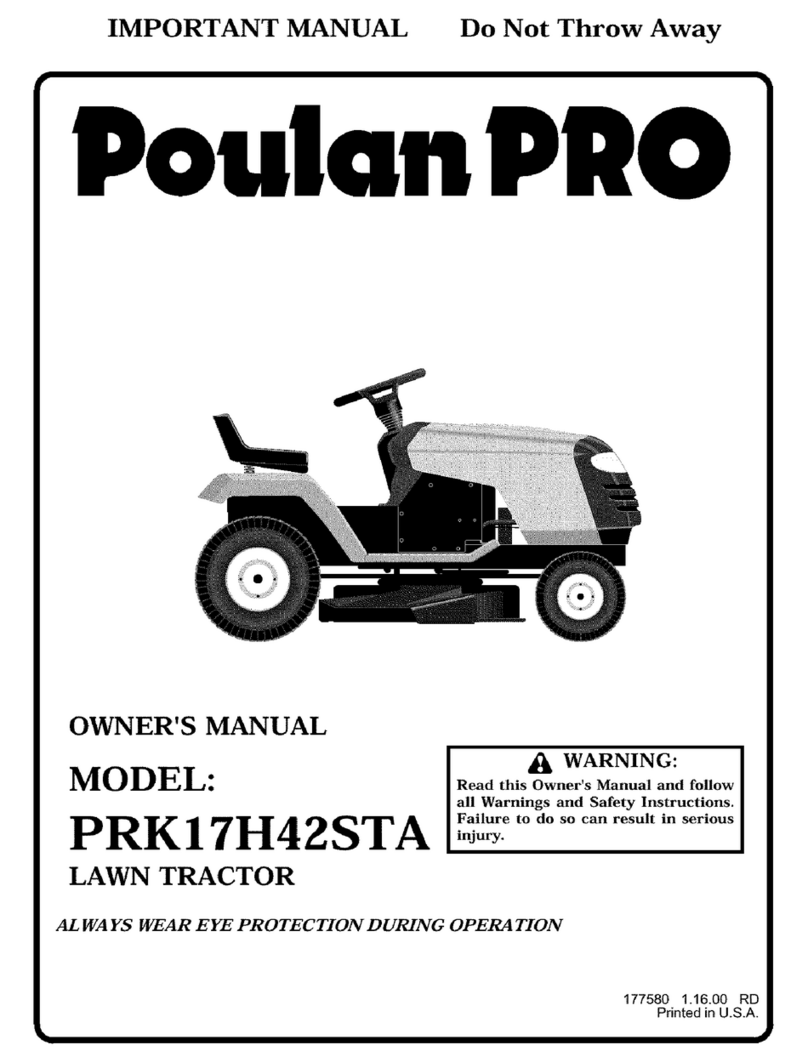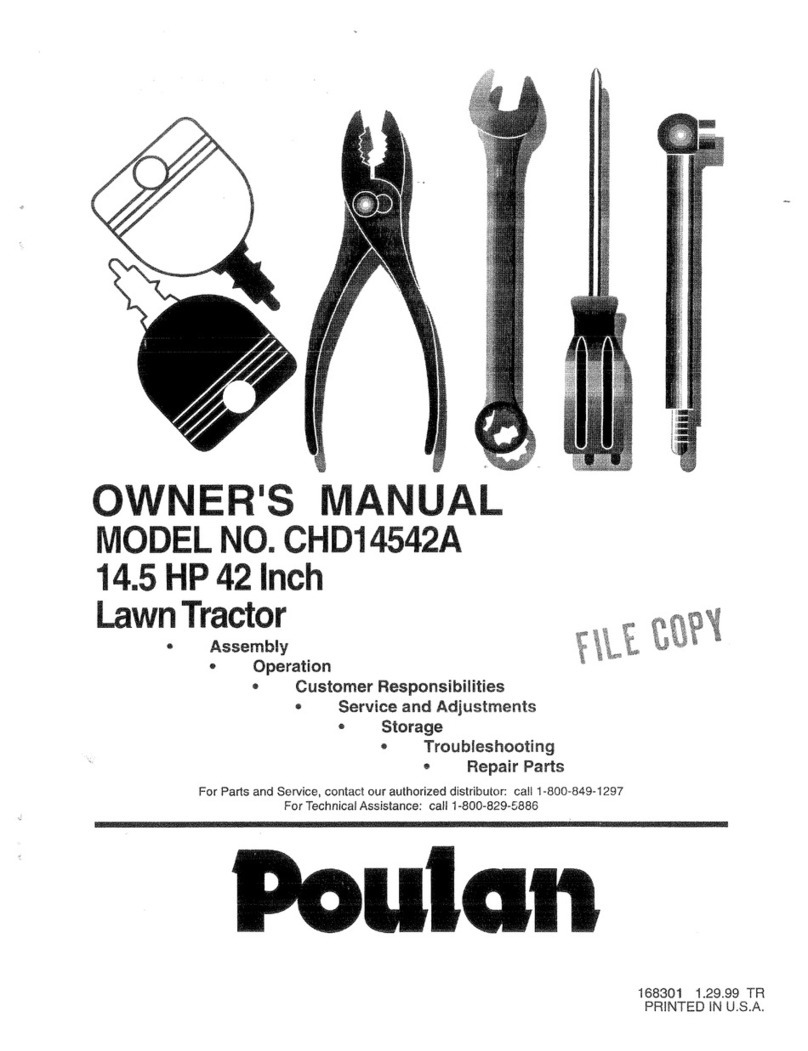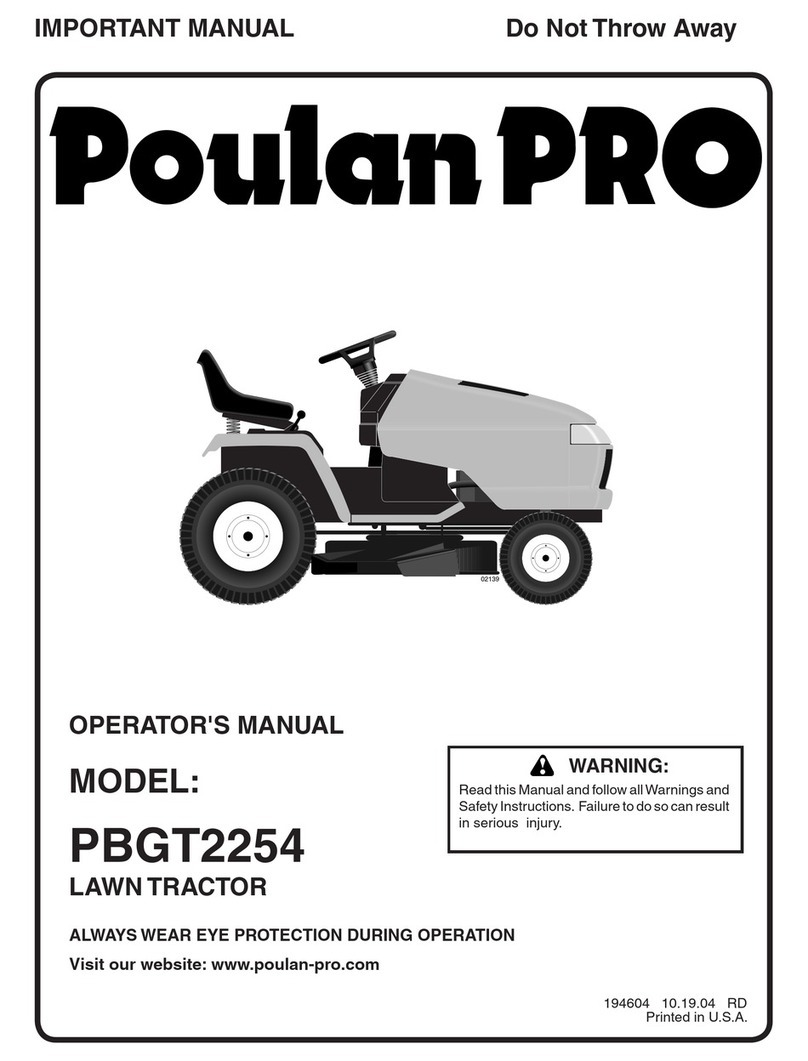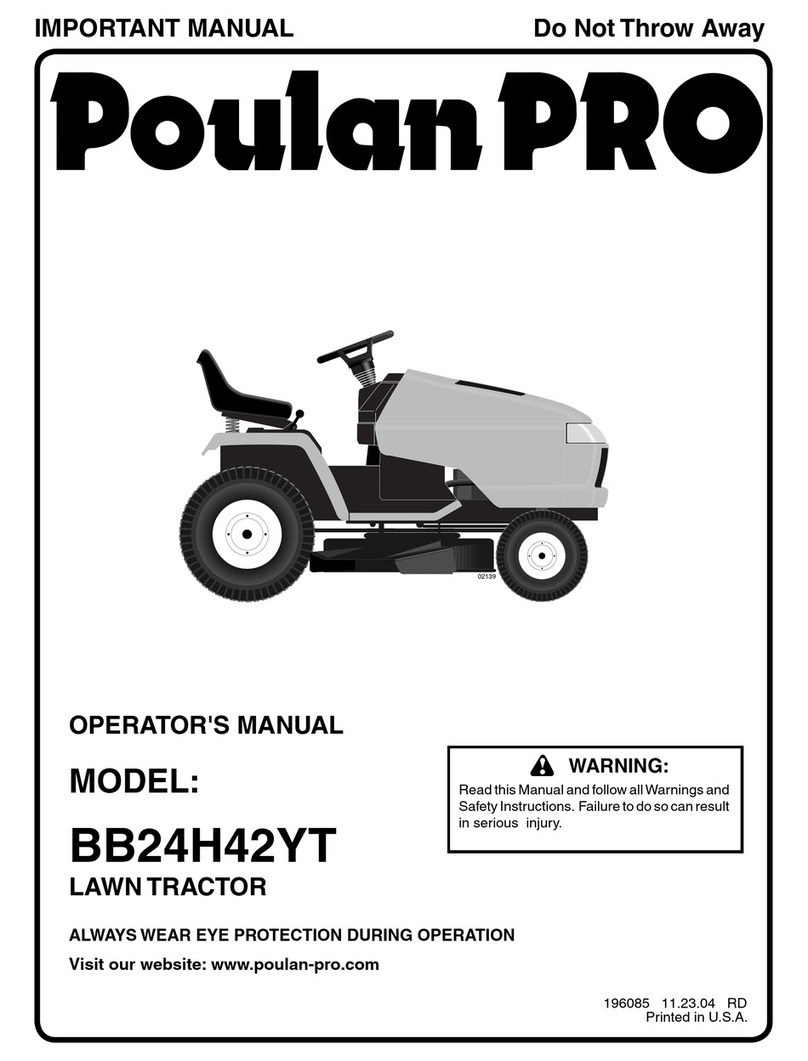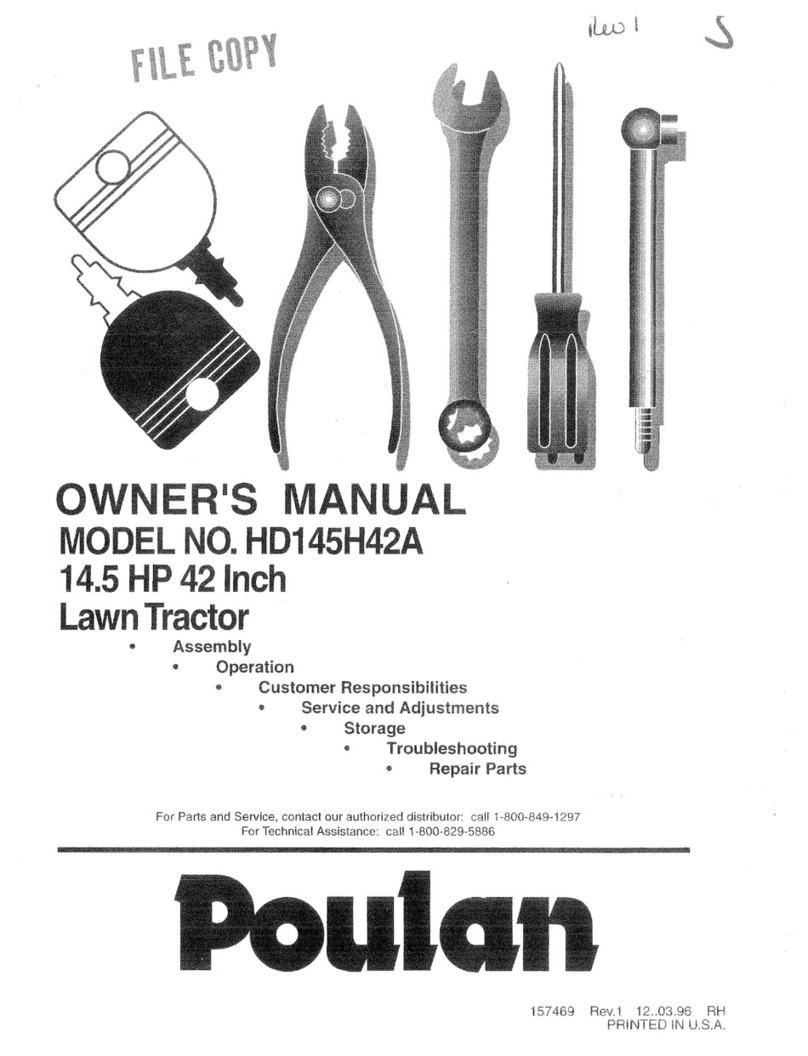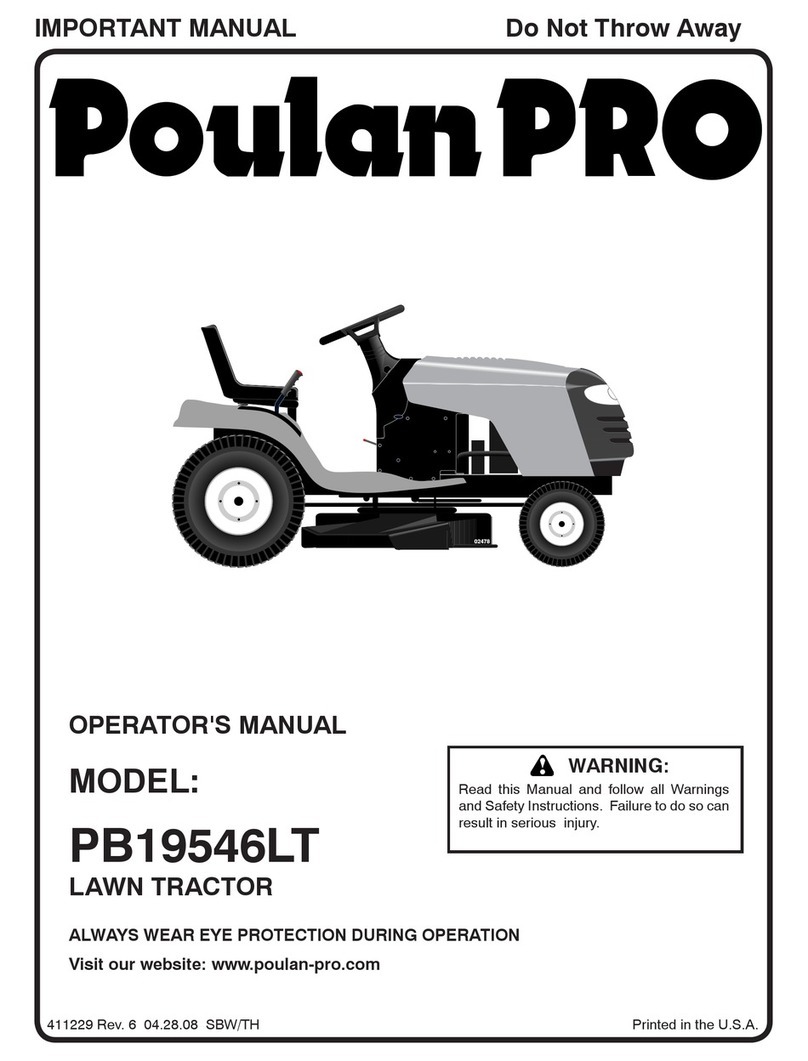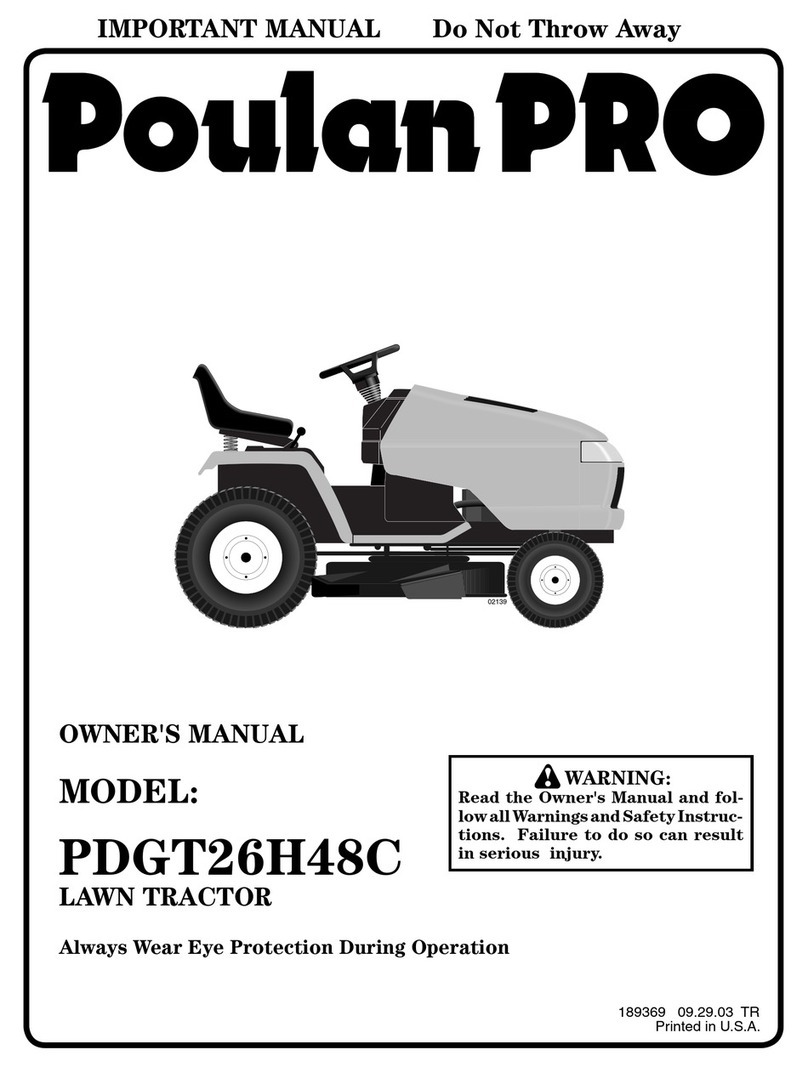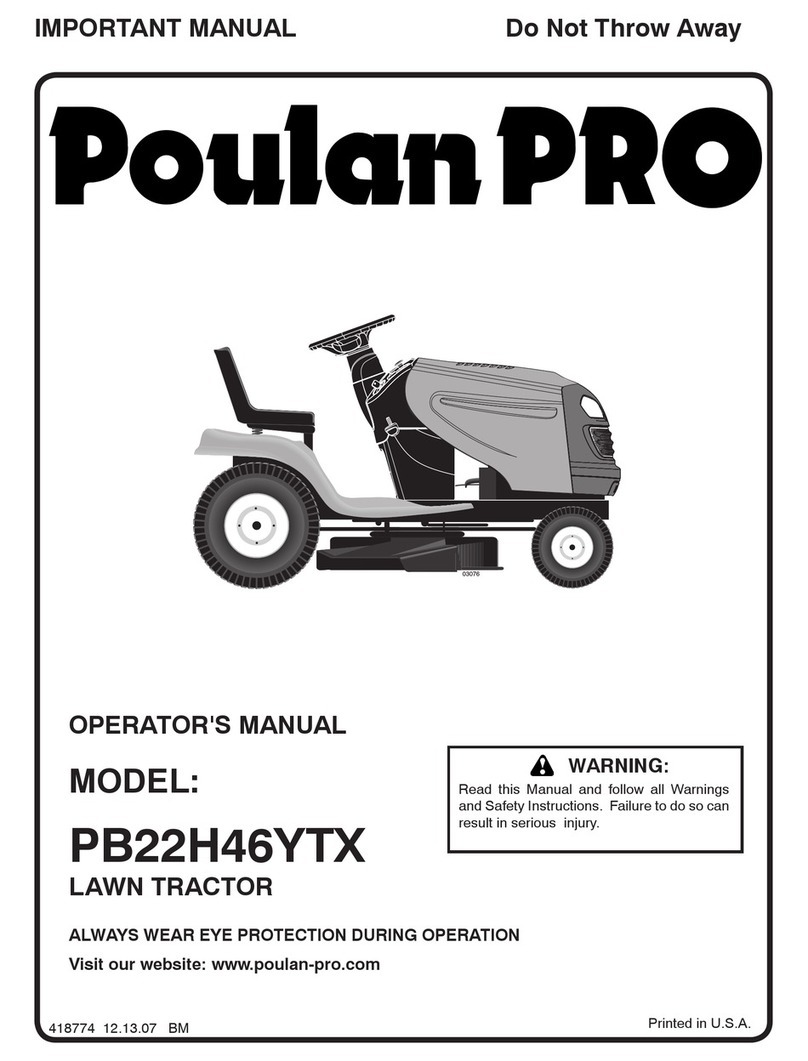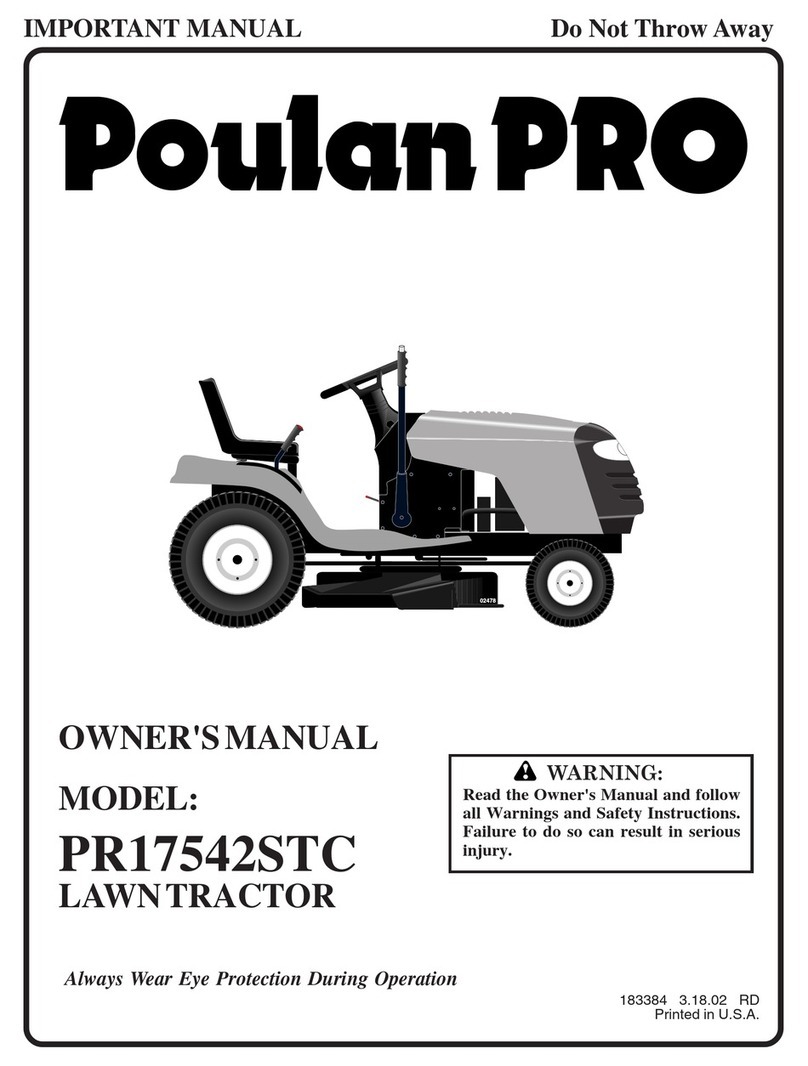SAFETY RULES
&s.FEoPE...o.P..C CESFO...OE N.OW .S
IMPORTANT: THIS CUTTING MACHINE ISCAPABLE OF AMPUTATING HANDS AND FEET AND THROWING OBJECTS.
FAILURE TO OBSERVE THE FOLLOWING SAFETY INSTRUCTIONS COULD RESULT IN SERIOUS INJURY OR DEATH.
I. GENERAL OPERATION
•Read, understand,andfollowallinstructionsinthe manual
and onthe machinebefore starting.
• Only allow responsible adults,who are familiar with the
instructions,tooperate the machine.
•Clear the area ofobjectssuch as rocks,toys, wire, etc.,
which could be pickedup and thrown bythe blade.
•Be surethe area isclear of otherpeople before mowing.
Stop machine ifanyone enters thearea.
•Never carrypassengers.
- Do not mow in reverse unless absolutely necessary.
Always lookdownand behind beforeand whilebacking.
• Beawareofthemowerdischargedirectionanddonotpoint
itat anyone. Do notoperate themowerwithouteitherthe
entiregrass catcher or the guard inplace.
•Slowdown beforeturning.
•Never leave arunningmachine unattended. Always turn
off blades, set parking brake, stop engine, and remove
keys before dismounting.
•Turn Offblades when not mowing.
•Stopengine before removing grasscatcheror unclogging
chute.
•Mow onlyin daylightor good artificiallight.
•Do notoperate the machinewhile underthe influenceof
alcohol or drugs.
•Watch for traffic when operating near or crossing read-
ways.
•Useextracarewhen k;ading orunloadingthemachineinto
a trailer or truck.
•Data indicatesthatoperators, age60 yearsand above, are
involved in a large percentage of riding mower-related
injuries. These operators should evaluate their ability to
operate the riding mower safely enough to protect them-
selves and others from sedous injury.
• Keep machine free ofgrass, leaves or other debds build-
upwhich can touch hot exhaust / engine parts and bum.
Do not allow the mower deck to plow leaves
or other debris which can cause build-up to occur. Clean
any oil or fuel spillage before operating or storing the
machine. Allow machine to cool before
storage.
II. SLOPE OPERATION
Slopesare a majorfactor relatedto loss-of-controland tipover
accidentswhichcan resultin severeinjuryor death. Allslopes
requireextracaution.Ifyoucannotback uptheslopeorifyoufee
uneasyon it,donotmowit.
DO:
•Mow up and downslopes, notacross.
•Remove obstacles such as rocks,tree limbs,etc.
•Watch for holes, ruts, or bumps. Uneven terrain could
overfum the machine. Tallgrass can hide obstacles.
•Use slow speed. Choose a low gear so thatyou willnot
have to stop or shiftwhile on the slope.
•Followthe manufacturer's recommendations for wheel
weights orcounterweightsto improvestability.
•Useextracare withgrass catchersorother attachments.
These can change the stabilityofthe machine.
•Keep allmovement on the slopesslowand gradual. Do
not make sudden changes inspeed or direction.
2
•Avoidstartingor stopping onaslope. Iftires losetraction,
disengagethe bladesand proceedslowlystraightdown
the slope.
DO NOT:
•Do not turnon slopes unlessnecessary, and then, turn
slowlyand gradually downhill,if possible.
•Do not mow near drop-offs, ditches, or embankments.
The mower could suddenlytum overitawheel isover the
edge of a cliffor ditch, or if an edge caves in.
•Do notmow onwet grass. Reduced tractioncould cause
sliding.
•Donottrytostabilizethemachinebyputtingyourfooton
theground.
•Do not use grass catcher on steep slopes.
III. CHILDREN
Tragic accidentscan occur ifthe operator isnot alert to the
presence of children. Children are often attracted to the
machineandthe mowingactivity.Neverassume thatchildren
willremainwhere you lastsaw them.
•Keep children out of the mowing area and under the
watchfulcare ofanother responsibleadult.
•Be alert and turnmachine offifchildren enter the area,
•Beforeandwhenbacking, leekhehindanddownforsmall
children.
•Never carry children. They may falloffand besedously
injuredor interferewithsafe machine opera'don.
•Never allowchildrentooperatethe machine.
•Use extra care when approaching blindcomers, shrubs,
trees, or other objectsthat may obscurevision.
IV. SERVICE
•Useextracare inhandlinggasolineand otherfuels. They
are flammable and vaporsare explosive.
- Use onlyan approvedcontainer.
- Never remove gas cap or add fuel with the engine
running. Allowengine tocoolbefore refueling. Do not
smoke.
- Never refuel the machine indoors.
- Never store the machine or fuelcontainerinside where
there is an open flame, such as awater heater.
• Never runa machine insidea closedarea.
•Keep nutsand bolts,especially bladeattachment bolts,
tightand keep equipment ingoodcondition.
• Never tamper with safety devices. Check their proper
operationregularly.
•Keep machine freeofgrass,leeves,orotherdebrisbuild-
up. Cleanoilorfuel spillage.Allowmachine tocoolbefore
storing.
•Stop and inspect the equipment ifyou stdke an object.
Repair, ifnecessary, before restarting.
•Never make adjustments or repairs with the engine
running.
•Grasscatcher componentsaresubjecttowear, damage,
and deterioration,which could expose moving parts or
allowobjectstobe thrown. FrequentJycheckcompenents
and replace with manufacturer's recommended pads,
when necessary.
•Mower blades are sharpand cancut. Wrap theblade(s)
or wear gloves, and use extra caution when servicing
them.
•Check brake operation frequently. Adjust and service
as required.
